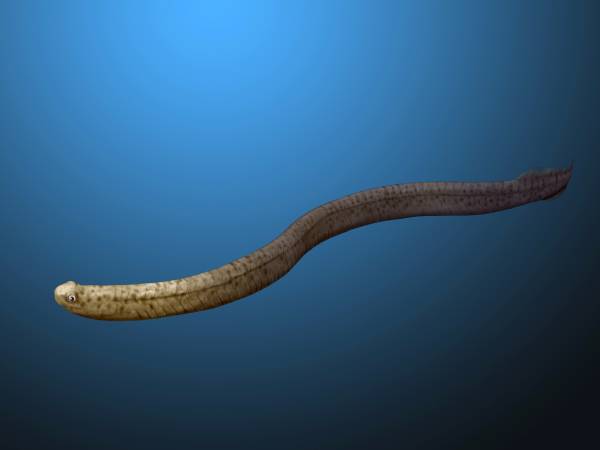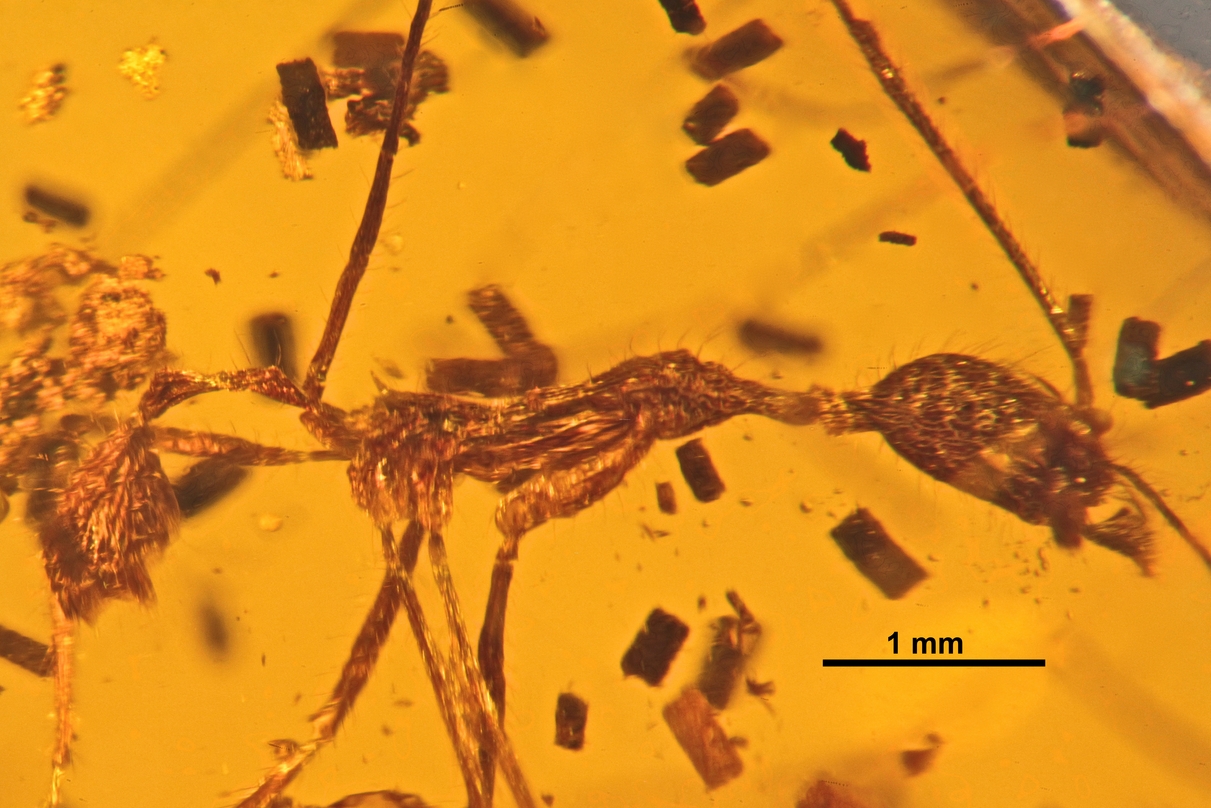|
Protoconodonta
Protoconodonts are an extinct taxonomic group of conodonts or, possibly, Chaetognaths. Chaetognaths (also known as arrow worms) were thought possibly to be related to some of the animals grouped with the conodonts. The conodonts themselves, however, are thought to be related to the vertebrates Vertebrates () comprise all animal taxa within the subphylum Vertebrata () ( chordates with backbones), including all mammals, birds, reptiles, amphibians, and fish. Vertebrates represent the overwhelming majority of the phylum Chordata, .... It is now thought that protoconodont elements (e.g., '' Protohertzina anabarica'' Missarzhevsky, 1973), are probably grasping spines of chaetognaths rather than the oropharyngeal elements of conodonts. Previously chaetognaths in the Early Cambrian were only suspected from these protoconodont elements (for example '' Phakelodus''), but the more recent discoveries of body fossils have confirmed their presence then. References * Middle and ... [...More Info...] [...Related Items...] OR: [Wikipedia] [Google] [Baidu] |
Mongolodus
''Mongolodus'' is an extinct genus of protoconodont Protoconodonts are an extinct taxonomic group of conodonts or, possibly, Chaetognaths. Chaetognaths (also known as arrow worms) were thought possibly to be related to some of the animals grouped with the conodonts. The conodonts themselves, how ...s. References * * External links * * Conodont genera Cambrian conodonts Paleozoic life of Newfoundland and Labrador Fossil taxa described in 1977 {{conodont-stub Cambrian genus extinctions ... [...More Info...] [...Related Items...] OR: [Wikipedia] [Google] [Baidu] |
Protohertzina
''Protohertzina'' is a genus of conodonts (protoconodonts or paraconodonts) or, possibly, Chaetognaths, found at the beginning of the Cambrian explosion. Protoconodonts are an extinct taxonomic group of conodonts.Zooproblematica and mollusca from the Lower Cambrian Meishucun section (Yunnan, China) and taxonomy and systematics of the Cambrian small shelly fossils of China. P. Y. Parkhaev and Y. Demidenko, Paleontological Journal, 2010, volume 44, issue 8, pages 883-1161, Chaetognaths (also known as arrow worms) were thought possibly to be related to some of the animals grouped with the conodonts. The conodonts themselves, however, are thought to be related to the vertebrates. It is now thought that protoconodont elements (e.g., ''Protohertzina anabarica'' Missarzhevsky, 1973), are probably grasping spines of chaetognaths rather than teeth of conodonts. ''Protohertzina'' fossils have been found in the Ingta Formation of Canada. Use in stratigraphy The earliest known fossi ... [...More Info...] [...Related Items...] OR: [Wikipedia] [Google] [Baidu] |
Animal
Animals are multicellular, eukaryotic organisms in the Kingdom (biology), biological kingdom Animalia. With few exceptions, animals Heterotroph, consume organic material, Cellular respiration#Aerobic respiration, breathe oxygen, are Motility, able to move, can Sexual reproduction, reproduce sexually, and go through an ontogenetic stage in which their body consists of a hollow sphere of Cell (biology), cells, the blastula, during Embryogenesis, embryonic development. Over 1.5 million Extant taxon, living animal species have been Species description, described—of which around 1 million are Insecta, insects—but it has been estimated there are over 7 million animal species in total. Animals range in length from to . They have Ecology, complex interactions with each other and their environments, forming intricate food webs. The scientific study of animals is known as zoology. Most living animal species are in Bilateria, a clade whose members have a Symmetry in biology#Bilate ... [...More Info...] [...Related Items...] OR: [Wikipedia] [Google] [Baidu] |
Chordata
A chordate () is an animal of the phylum Chordata (). All chordates possess, at some point during their larval or adult stages, five synapomorphies, or primary physical characteristics, that distinguish them from all the other taxa. These five synapomorphies include a notochord, dorsal hollow nerve cord, endostyle or thyroid, pharyngeal slits, and a post-anal tail. The name “chordate” comes from the first of these synapomorphies, the notochord, which plays a significant role in chordate structure and movement. Chordates are also bilaterally symmetric, have a coelom, possess a circulatory system, and exhibit metameric segmentation. In addition to the morphological characteristics used to define chordates, analysis of genome sequences has identified two conserved signature indels (CSIs) in their proteins: cyclophilin-like protein and mitochondrial inner membrane protease ATP23, which are exclusively shared by all vertebrates, tunicates and cephalochordates. These CSIs provi ... [...More Info...] [...Related Items...] OR: [Wikipedia] [Google] [Baidu] |
Chaetognatha
The Chaetognatha or chaetognaths (meaning ''bristle-jaws'') are a phylum of predatory marine worms that are a major component of plankton worldwide. Commonly known as arrow worms, about 20% of the known Chaetognatha species are benthic, and can attach to algae and rocks. They are found in all marine waters, from surface tropical waters and shallow tide pools to the deep sea and polar regions. Most chaetognaths are transparent and are torpedo shaped, but some deep-sea species are orange. They range in size from . There are more than 120 modern species assigned to over 20 genera. Despite the limited diversity of species, the number of individuals is large. Arrow worms are usually considered a type of protostome that do not belong to either Ecdysozoa or Lophotrochozoa. Anatomy Chaetognaths are transparent or translucent dart-shaped animals covered by a cuticle. The body is divided into a distinct head, trunk, and tail. There are between four and fourteen hooked, grasping spin ... [...More Info...] [...Related Items...] OR: [Wikipedia] [Google] [Baidu] |
Conodont
Conodonts ( Greek ''kōnos'', " cone", + ''odont'', " tooth") are an extinct group of agnathan (jawless) vertebrates resembling eels, classified in the class Conodonta. For many years, they were known only from their tooth-like oral elements, which are usually found in isolation and are now called conodont elements. Knowledge about soft tissues remains limited. They existed in the world's oceans for over 300 million years, from the Cambrian to the beginning of the Jurassic. Conodont elements are widely used as index fossils, fossils used to define and identify geological periods. The animals are also called Conodontophora (conodont bearers) to avoid ambiguity. Discovery and understanding of conodonts The teeth-like fossils of the conodont were first discovered by Heinz Christian Pander and the results published in Saint Petersburg, Russia, in 1856. The name ''pander'' is commonly used in scientific names of conodonts. It was only in the early 1980s that the first fossil evi ... [...More Info...] [...Related Items...] OR: [Wikipedia] [Google] [Baidu] |
Ed Landing
Ed Landing (born 10 August 1949 in Milwaukee) is an American geologist and paleontologist. Education As an undergraduate, Landing studied at the University of Wisconsin, where he gained his BSc, later attending graduate school at the University of Michigan, earning his MSc and PhD. Career He held post doctoral positions at University of Waterloo, Ontario; U. S. Geological Survey, Denver; and the University of Toronto. He then spent his career as a New York State paleontologist and curator of paleontology at the New York State Museum in Albany, where he became an emeritus in 2015. Field work His field work in America and Canada (as well as in Mexico, Argentina, England, Wales, Germany, Morocco, Israel, Jordan, Siberia, south China) led to over 250 publications and 11 books that focus on the origin and precise uranium–lead dating (U-Pb) geochronology of the oldest metazoans, the biostratigraphy of the Paleozoic, Early Paleozoic, recognition of ancient climate cycles and the p ... [...More Info...] [...Related Items...] OR: [Wikipedia] [Google] [Baidu] |
1995 In Paleontology
Molluscs Bivalves Arthropods Newly named arachnids Newly named insects Fish Newly named bony fish Archosauromorphs Newly named dinosaurs * Fossil hunters working on behalf of the Royal Saskatchewan Museum discover a large coprolite from a theropod dinosaur in Maastrichtian strata. In 1997 it is sent to coprolite specialist Karen Chin, who determines that this specimen of fossilized feces was attributable to ''Tyrannosaurus rex''. One year later, in 1998, Karen Chin and others publish a joint paper in ''Nature'' announcing the finding. * Paul Sereno lead an expedition to the Kem Kem region of southeastern Morocco. Among the fossils discovered is a partial skull of '' Carcharodontosaurus saharicus''. Significantly, it preserves a "complete and undistorted braincase" which would later be described in detail along with the structure of the inner ear of ''C. saharicus'' by Hans C. E. Larsson in 2001."Introduction," Chure (2001). Pg. 20. Data courtesy of George Olshevsky's ... [...More Info...] [...Related Items...] OR: [Wikipedia] [Google] [Baidu] |
Conodont
Conodonts ( Greek ''kōnos'', " cone", + ''odont'', " tooth") are an extinct group of agnathan (jawless) vertebrates resembling eels, classified in the class Conodonta. For many years, they were known only from their tooth-like oral elements, which are usually found in isolation and are now called conodont elements. Knowledge about soft tissues remains limited. They existed in the world's oceans for over 300 million years, from the Cambrian to the beginning of the Jurassic. Conodont elements are widely used as index fossils, fossils used to define and identify geological periods. The animals are also called Conodontophora (conodont bearers) to avoid ambiguity. Discovery and understanding of conodonts The teeth-like fossils of the conodont were first discovered by Heinz Christian Pander and the results published in Saint Petersburg, Russia, in 1856. The name ''pander'' is commonly used in scientific names of conodonts. It was only in the early 1980s that the first fossil evi ... [...More Info...] [...Related Items...] OR: [Wikipedia] [Google] [Baidu] |
Vertebrates
Vertebrates () comprise all animal taxa within the subphylum Vertebrata () ( chordates with backbones), including all mammals, birds, reptiles, amphibians, and fish. Vertebrates represent the overwhelming majority of the phylum Chordata, with currently about 69,963 species described. Vertebrates comprise such groups as the following: * jawless fish, which include hagfish and lampreys * jawed vertebrates, which include: ** cartilaginous fish (sharks, rays, and ratfish) ** bony vertebrates, which include: *** ray-fins (the majority of living bony fish) *** lobe-fins, which include: **** coelacanths and lungfish **** tetrapods (limbed vertebrates) Extant vertebrates range in size from the frog species '' Paedophryne amauensis'', at as little as , to the blue whale, at up to . Vertebrates make up less than five percent of all described animal species; the rest are invertebrates, which lack vertebral columns. The vertebrates traditionally include the hagfish, wh ... [...More Info...] [...Related Items...] OR: [Wikipedia] [Google] [Baidu] |






